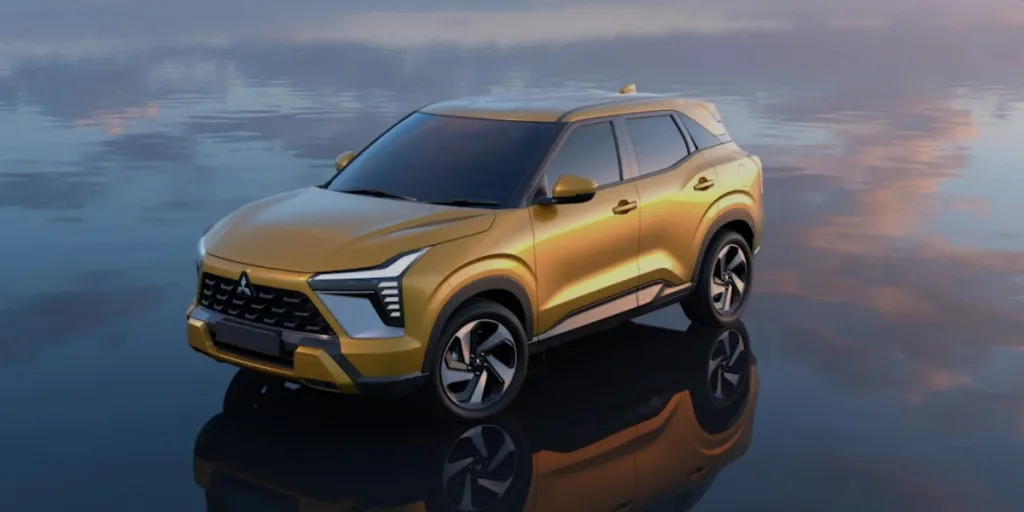Rise of competition from Chinese OEMs forces Mitsubishi to raise its game in southeast Asia
Mitsubishi Motors has intensified its new model activity in southeast Asia this year as the company faces up to the challenge of fast-rising competition, particularly from Chinese automakers which have put the region on the frontline of their global expansion. Hyundai Motor Group too has stepped up its investments in the southeast Asian region recently.
In August, the Tokyo-headquartered automaker launched its latest passenger vehicle model, the X-Force compact SUV, at the Gaikindo Indonesia International Auto Show. Indonesia will likely be the model’s largest single market and has been designated its main production hub for the region and for markets in Latin American, Middle East and Africa.
The XForce, based on the XFC concept unveiled last year, will be produced from the fourth quarter of 2023 alongside the highly successful Xpander and Xpander Cross models and the Pajero SUV at the company’s joint venture plant in Bekasi – a satellite city just east of the country’s capital Jakarta. The facility itself is being expanded to 250,000 units/year as its role within the company continues to grow.
The XForce is powered by a 1.5L petrol engine and a hybrid-powered version is expected to follow within a year. A similar model, the Outlander compact SUV/crossover vehicle, is produced in Japan for sale domestically, North America and Europe. Mitsubishi is also preparing to produce the Minicab MiEV battery electric vehicle (EV), a model developed and produced in Japan in partnership with Nissan, at the Bekasi plant by the end of this year.
In July Mitsubishi unveiled the new generation Triton pickup truck, a hugely important model for the company. It is produced at a plant in Laem Chabang, Thailand, for world markets. The facility has an annual production capacity of 400,000 units a year and also produces the Pajero SUV, Attrage and Mirage passenger cars for regional markets. Mitsubishi aims to produce 200,000 units of the new Triton per year, up from close to 160,000 last year.
Southeast Asia is a key regional market for Mitsubishi and also an important export base for the company. Including Taiwan, the region accounted for almost one-third of the automaker’s one million global vehicle sales last year. It also accounted for around 45% of the company’s global vehicle output, similar to Japan which historically is Mitsubishi’s main export hub. The company also has vehicle assembly joint ventures in Taiwan, Vietnam, Philippines and China.
Mitsubishi’s manufacturing presence in other regions has declined significantly in recent years, having abandoned production in the USA, Australia and India in the last decade alone. Prior to that it had discontinued its Nedcar joint venture in the Netherlands with Volvo Cars much earlier on.
The company has become a small-scale vehicle manufacturer on a global basis, dwarfed by the likes of Toyota, Volkswagen Group, Stellantis and Hyundai Motor Group, which produce between seven and ten million vehicles each per year. Ironically, it seems not too long ago that Mitsubishi licensed its Lancer passenger car technology to Hyundai Motor, in the 1980s, helping the South Korean company on its way to becoming a global automotive powerhouse.
The latest threat to Mitsubishi comes from the accelerating expansion of Chinese automakers in world markets. Companies such as BYD, Geely, SAIC Motor and Great Wall Motors are increasingly targeting new market segments such as electric and plug-in hybrid vehicles and can call upon significant economies of scale in their home market. Southeast Asia, which hopes to play a significant part in the future global EV supply chain, is on the front line of this expansion with close to a dozen new vehicle assembly plants announced in the last couple of years alone.
Mitsubishi will rely increasingly on the Renault-Nissan Mitsubishi alliance, particularly Nissan, to share costs and help it take on this new competitive threat. But this may be too little too late and Nissan too hasn’t performed that well in recent years and is similarly threatened by rising global competition.
Nissan will replace its Thai-made Navara pickup truck, the first full-model changeover in ten years, with a model based on the new Mitsubishi Triton. Other synergies in the region have been minimal, including limited production of the Nissan Livina small car at Mitsubishi’s Bekasi plant, after Nissan closed its two vehicle assembly plants in the country in the last few years. However, the two companies will need to step up their new model collaboration and development if they are to survive this new wave of competition.
Source from Just-auto.com
Disclaimer: The information set forth above is provided by Just-auto.com independently of Alibaba.com. Alibaba.com makes no representation and warranties as to the quality and reliability of the seller and products.




